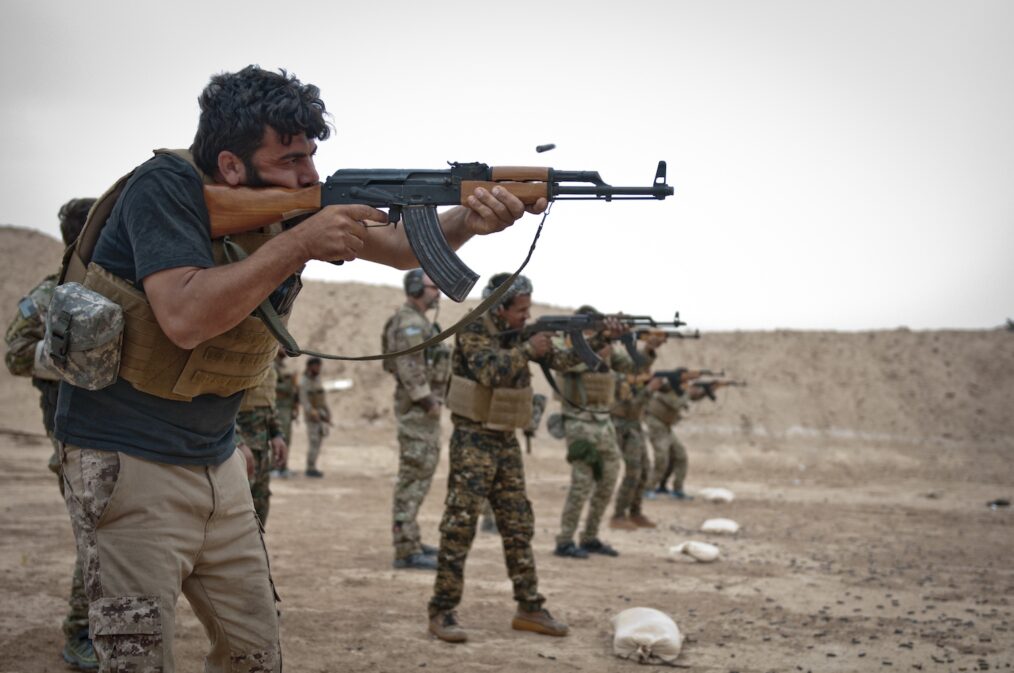
ISIS: From Unified Caliphate to Decentralized Lone Wolves

Members of a US-led coalition prepare to fight ISIS and retake Hajin. Credit to Sgt. Timothy Koster.
This September, the Syrian Democratic Forces began the final push to retake the last vestige of territory held by the Islamic State of Iraq and Syria or ISIS. After previous territorial concessions, the Islamic State has reorganized and consolidated their forces for a final stand in Hajin, a sliver of Syrian territory bordering the Euphrates River.
This final battle is a critical moment. Much like a wounded animal backed into a corner, it is expected that the remaining ISIS fighters, who are likely some of the most fanatical, will fight to the death without any intention to surrender. Regardless of how difficult the fight will be, coalition forces and security analysts are confident that Hajin will be retaken in a matter of months, and such an outcome would be a great victory for many reasons.
First, ISIS will lose the ability to tax Hajin’s inhabitants, limiting their ability to pay fighters. Second, they will lack any operational space to train new recruits into combatants. Most importantly, a victory would mark the end of ISIS’ ability to establish a Caliphate, one of the group’s primary political objectives. Since the organization’s inception, the group has focused on taking large swaths of territory in the Middle East. However, while this would certainly be a win, there is still the question of what happens next.
ISIS membership is estimated to be anywhere from 25,000 to 30,000, and fighters are spread throughout the world. The capture of Haijin will not result in the disappearance of these members, so there is a question as to how the organization will change after the loss of its territories.
Increasing devotion to counter-terrorism efforts by governments around the world will also pose an issue. Face-recognition and biometric technology at ports of entry have made it increasingly difficult for ISIS fighters to gain access to Western nations, and the terrorist group must now adapt to the changing situation to avoid detection by state governments. Accordingly, they have decreased their emphasis on hierarchy and relied less upon territory, focusing instead on unconventional tactics. ISIS once used conventional military force to conquer its territories, whereas now, the group has lost that capability and must adapt a clandestine strategy in order to survive.
This shift in organizational structure has significant implications for ISIS’ future strategy. ISIS-inspired lone wolf attacks have increased substantially, and will likely become even more common in the future. Internet-savvy campaigns to spread ISIS propaganda have inspired attackers around the world to commit acts of terror.
These solo attackers, or “lone wolves,” are difficult to pinpoint because they either have no direct affiliation with the group or operate within a small, cellular structure which has little to no communication with other group members. The Pulse Nightclub shooting, the NYC truck attack, and the Las Vegas mass shooting are all examples of lone-wolf attacks; for example, though he was not an official member of the Islamic State hierarchy, Omar Mateen still claimed allegiance to ISIS before going into Pulse Nightclub and killing nearly 50 people. These types of incidents are exactly what ISIS wants.
Many of these lone wolves do not have the training and resources needed to pull off a 9/11-scale attack, so instead, they turn to terrorism on a smaller scale. It is disturbingly easy for an ISIS-inspired individual to rent a U-Haul and run people over by the Hudson River, but incredibly difficult for a group of official members of a terrorist organization to hijack four planes and fly them into the Twin Towers. Focusing on recruiting and radicalizing lone wolves is, therefore, the easiest and most effective way for ISIS to ensure that their mission is carried on in the future.
Notably, the greatest impact of lone wolf attacks lies in their ability to incite fear and hysteria. Though the concrete impact of a lone wolf attack pales in comparison to the carnage of a large-scale incident, the possibility of a lone wolf attack still gravely concerns millions of people around the world.
The conventional capabilities of ISIS have been reduced dramatically, but people around the world should not turn a blind eye. In the words of an ISIS spokesman encouraging lone wolves to enter the fight, “the smallest action you do in the heart of their land is dearer to us than the largest action by us and more effective and more damaging to them.”
